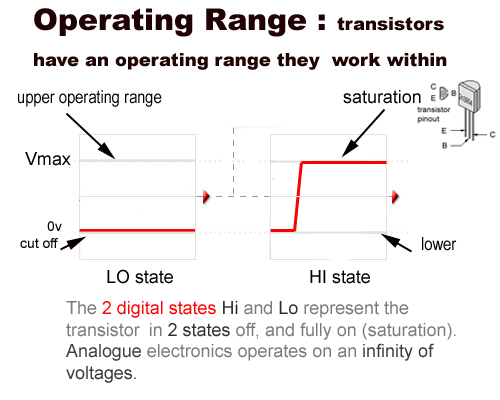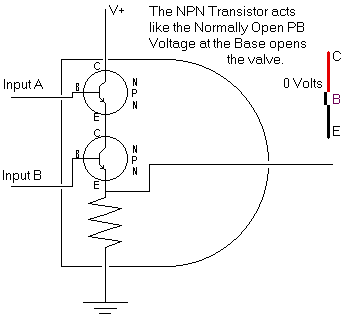 |
transistor switching |
||||

The
other important use for the transistor is as a
switch. Unlike
mechanical switches and relays they do not wear out, and can be controlled
electronically. However they
cannot switch safely or cost effectively over 50A loads.
closing the switch forward biases the
transistor which then energizes the LED
Digital
logic is made possible by transistor switches and are the basis of the
logic gates that comprise ALL digital devices. The AGE of POSSIBILITY is driven by the transistor!
Digital Application of Transistor
Switching
The
transistor controlled buzzer
circuit is activated when a normally
closed (NC) push button is opened.
Phototransistors have an exposed base When
exposed to light the photo electricity generated forward biases the
the junction Phototransistors are used in Optic - Isolators that transmit signals between two stages and prevent mixing of different voltages
Here
is the termination of a
Fiber Optic Cable
OPTOCOUPLERS The Optocoupler above is used to isolate the low voltage control circuit (left) from the high voltage motor control circuit (right)
Most of digital
electronics is based on transistor switching to perform binary functions at high
speed. |
|||||










